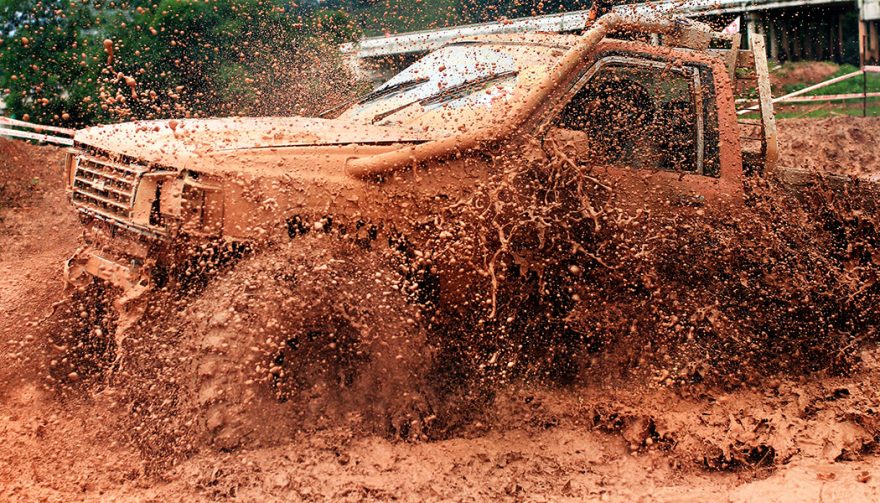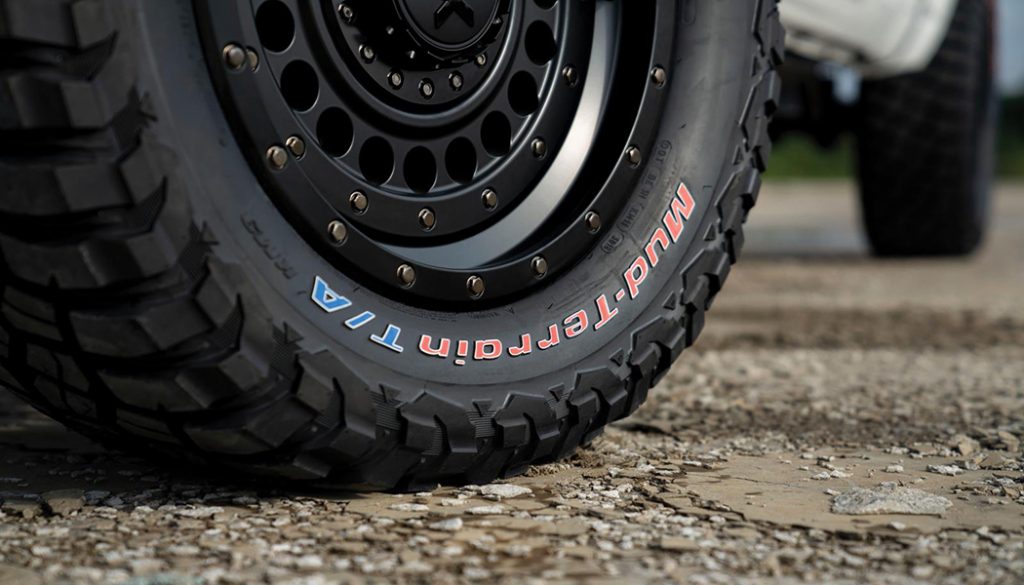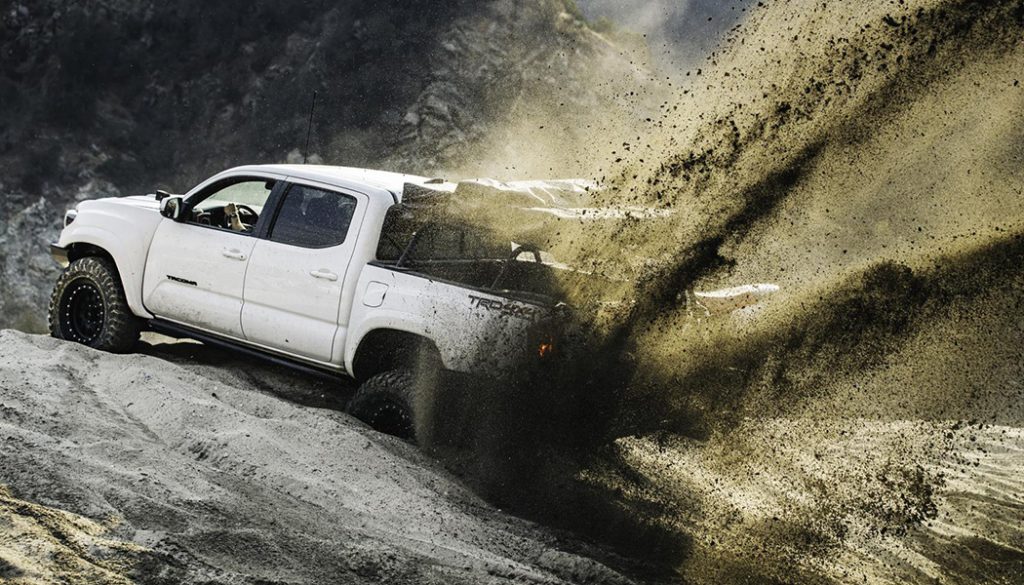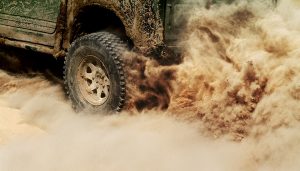
Sure mud tires for trucks look cool, but do you really need the big chunkies on your daily driver? We sling the information you need.
The Big Boggers: What to Know About Mud Tires for Trucks and SUVs
If you are an off-road enthusiast you are already familiar with the big, chunky rubber that always seems to be on the vehicle that conquers the rock garden at your local off-road park. Mud terrain tires are considered the ultimate for cruising through the slop of a muddy track or crawling the most challenging rock obstacles. They provide the means to optimize the torque and other off-road capabilities of your big-boy toy, and let you take on trails your OEM tires just can’t. So if mud tires for trucks represent the best traction, grip, and toughness available, why doesn’t every off-roader have them mounted on their truck or SUV?
To understand that, you have to understand how they work (or don’t work) and then make a decision for yourself.
What is a Mud Tire?
Mud tires for trucks, also known as mud terrain tires, are premium (read expensive) off-road tires designed for extreme off-road conditions. They are engineered for optimal off-road performance with no consideration for on-road performance. In fact, the original “mud tires” were derivatives of tractor tires and until recently, they never really were all that different from their agricultural cousins.

Tread Blocks – Where the Rubber Meets the Muck
Aggressive tread blocks are the most visible feature of mud tires for trucks, but there is more to their design than just big hunks of rubber. That said, the large tread blocks are designed to claw into the surface to gain a grip other less aggressive tires cannot. The treads are thick, angled, and deep creating many biting edges. While every manufacturer of mud tires will have their own pattern of treads, they all will be aggressive in design.
Digging deep into the muck creates another challenge. If you have ever tried to take on a muddy trail in a street-oriented truck or SUV tire, you’ve probably picked up stones, twigs, and other debris clogging the channels between treads. When a tire becomes packed with debris, it loses a significant amount of its traction. Mud tires with their exceptionally deep treads, magnify the problem. To prevent clogging of the treads, mud tires are designed with mud and stone ejectors embedded within the tread voids. Some manufacturers forego the ejectors but widen the voids between treads to provide a way for mud, rocks, and debris to escape.
While these techniques help, they are not 100% effective. If you’re riding on mud terrain tires, plan to spend a fair amount of time cleaning out the voids.

Sidewalls
Check out the sidewalls on mud tires for trucks and you’ll find that some of them have lugs located near the top of the sidewall. These extra chunks of rubber extend the grip of the tire to the side of the tire which is often submerged in slop on really challenging trails. The sidewalls on mud tires are stronger than most other tires. Almost all have a minimum of three-ply construction some have as much as twelve-ply.
These stronger sidewalls have a couple of not-so-obvious advantages. For starters, the strengthened sidewalls allow for “airing down” or reducing the psi. This increases the footprint of the tire which can be advantageous in several off-road scenarios. Secondly, the stronger sidewall enhances the payload and towing capability of the vehicle.
Rubber Compound
The compound recipe for mud tires for trucks focuses on, not surprisingly, durability. Users put these tires through some pretty tough ground conditions, so the rubber needs to be chip, cut, and puncture resistant. In addition, the chemical mix enhances grip on rocky and slick surfaces.
So, the combination of tread design, strong sidewalls, and a rubber that resists damage from cuts and punctures combine to make an awesome off-road tire. But are they the off-road tire for you?

Perfect for Extreme Terrain – Not so Hot on Pavement
Mud terrain tires are perfect for an ATV that gets trailered to and from the off-road park. But if you are thinking about mounting them on your Ford F 150 Raptor or your new Jeep Gladiator, and you count on that vehicle as your daily ride, you may want to think twice.
Mud tires for trucks have downsides. Here are a few of the challenges you will face if you mount them on your every day ride:
- Noise. Not surprisingly, these big, knobby tires are exceptionally loud on the highway. While changes in tread designs have made them quieter than the earlier generation of MT rubber, you are going to have a tough time carrying on a conversation in your cab without yelling.
- Tough to balance. Again, because of their size, weight, and uneven treadwear, mud tires are difficult to keep in balance.
- Out-of-round. Despite reinforced sidewalls (or maybe because of them) many mud tires become slightly out-of-round after extreme use. Not a problem off-road, a big problem on it.
- Poor fuel economy. Aggressive tread blocks add weight and increase roll resistance meaning it takes more power to move these monsters down the road.
- Limited or no treadwear warranty. You’ll be hard pressed to find a manufacturer that provides a treadwear warranty for mud tires. They are great on dirt, but those big treads are no match for hot concrete.
Are Mud Tires for Trucks for Me?
The decision to use mud tires really depends on how much “off-roading” you actually do. If you are a rancher or spend most of your workday driving on dirt then this rubber may be a great match. But if you only off-road on weekends, and you have a limited tire budget, you may want to consider an alternative tire. Yes they give your ride an awesome aggressive look, but mud tires for trucks really aren’t designed for use in what passes as the “real world” for most people.





